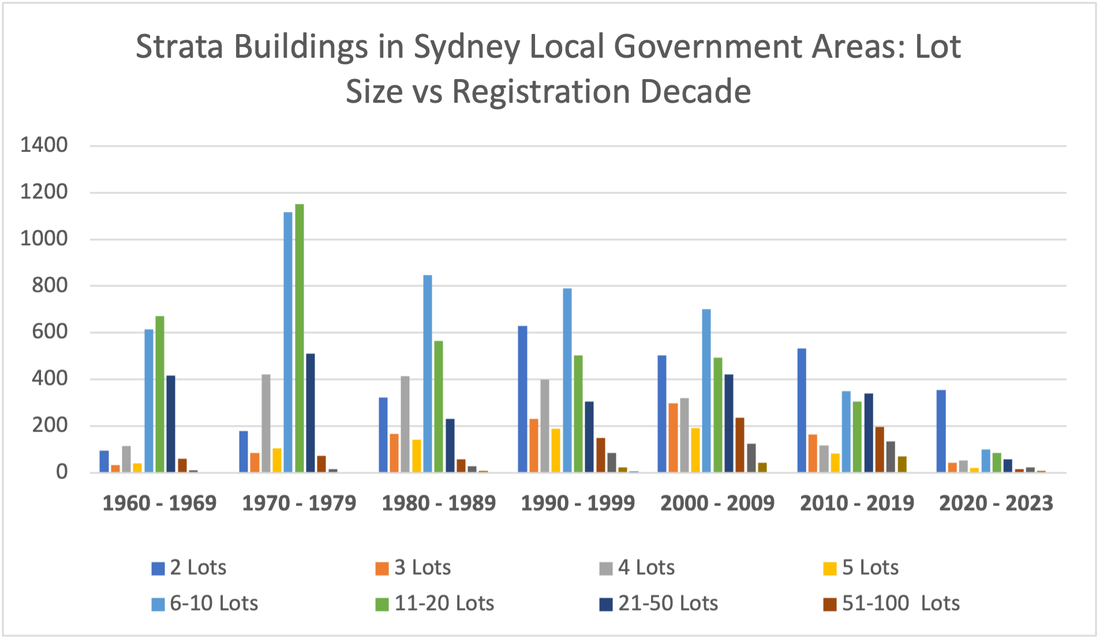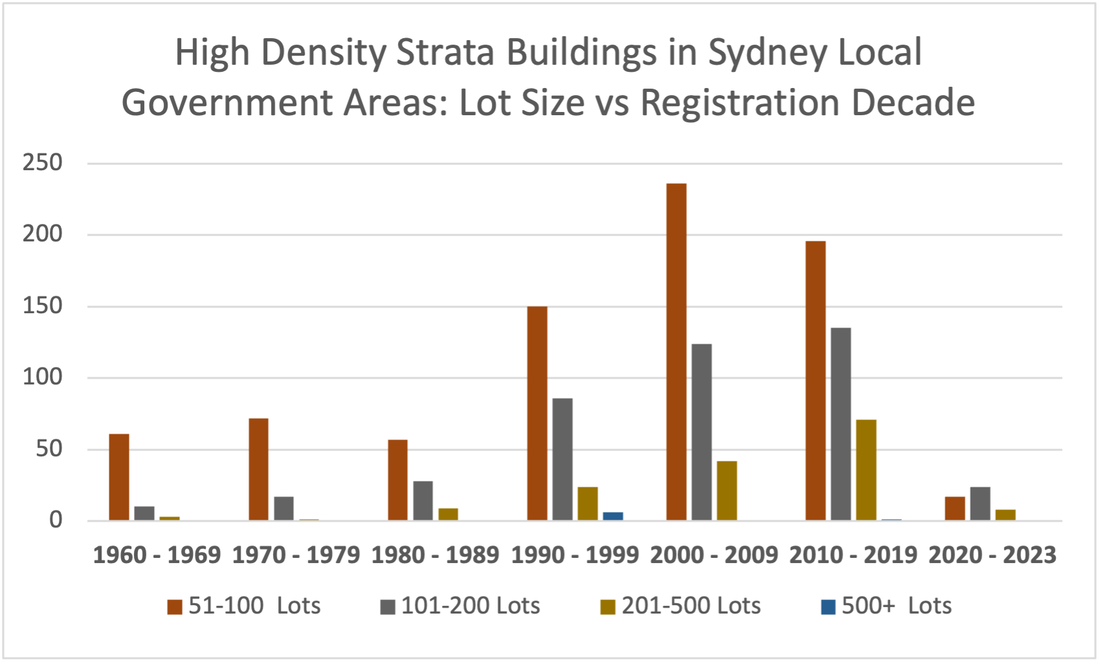|
Sydney is receiving a high influx of new residents, who will predominantly live in strata buildings. This article looks at some trends in urbanisation across a dozen local council areas in Sydney and highlights the need for further electrification of Sydney's apartment blocks. As urban centres evolve into economic and cultural hubs, the ensuing influx of residents escalates the demand for housing, compelling developers to embrace vertical solutions due to the diminishing availability of horizontal space. Greater metropolitan Sydney exemplifies this transformation to higher density living over recent decades, with no signs of slowing down. Projections anticipate Greater Sydney's population to reach around 6.1 million by 2041 – exceeding the current regional population by over one million. A significant portion of this populace will find residence in apartments, a trend supported by the trajectory of strata building development data. These trends towards higher density living raise questions about the future sustainability of Sydney's residential sector, given the existing electrification and decarbonisation challenges faced by strata communities. Analysis of the central metropolitan local government areas encompassing the City of Sydney, Woollahra, Waverley, Randwick, Inner West, Canada Bay, North Sydney, Mosman, Lane Cove, Willoughby, Ryde, and Kur-ring-gai, reveals a general trend toward this increased dwelling density. As depicted in Figure 1, strata buildings comprising 4 to 20 units – typically low-rise structures with up to 3 residential levels – have experienced a consistent decline since the 1970s when it comes to new developments. Conversely, strata buildings featuring 51 to 500+ units – predominantly high-rise (9 to 19 residential levels) and larger medium-rise (4 to 8 residential levels) constructions – have shown a steady upswing since the 1960s. This shift is captured in the focused higher density dwelling data presented in Figure 2, underscoring Sydney's transformation over the decades towards heightened vertical development. Interestingly, the data also underscores the emergence of duplexes, with a consistent rise in new 2-lot dwellings since the 1960s. This suggests that while the momentum tilts towards higher density living, certain pockets of Sydney remain inclined against or incapable of substantial vertical construction. Duplexes offer an appealing compromise between traditional detached houses and densely packed apartments. Figure 1: Size of Strata Buildings by Decade Figure 2: High density strata buildings by decade Figures 3 and 4 provide insights into the geographical distribution and relative density levels of apartment developments in Sydney. Over the last 5 years, Canada Bay, Randwick, Ryde, and the City of Sydney have led the pack in terms of development numbers, while the Inner West, North Sydney, Waverley, Kur-ring-gai, and Woollahra have progressed at a moderate pace. In contrast, Mosman, Lane Cove, and Willoughby have witnessed the “slowest” rate of development. However, Figure 4 reveals the magnitude of these developments, with the City of Sydney, Ryde, and Lane Cove clearly focussing on high-density high-rise projects - the 2023 data point for Lane Cove represents a single high-rise development comprising 637 lots! Conversely, while Canada Bay, Randwick, and Waverley report a substantial number of developments, their emphasis leans more towards lower-density low-rise complexes and townhouses. Figure 3: New Strata Developments by LGA Figure 4: New strata developments: Number of Lots by LGA The nature of the strata building, whether high-rise, medium-rise, low-rise, or townhouse, significantly influences the specific technical barriers encountered during electrification projects. Moreover, the inherent micro-government structure of strata presents an additional hurdle not faced by individual homeowners when implementing sustainability initiatives. Thus, the local councils included in this analysis have instituted programs aimed at enhancing sustainability and kickstarting the process of degasification and decarbonisation within their respective strata communities. Randwick, Waverley, Lane Cove, and Kur-ring-gai are launching local rebates for various electrification projects, encompassing solar, batteries, heat pumps, and electric vehicle charging. Notably, the City of Sydney and Waverly have taken a bold step by prohibiting gas usage in new developments, a measure that will hopefully spur action towards resolving issues such as "Robogas" - where some residents have been receiving gas bills years after the complete degasification of their apartment complexes (for more information, see https://www.wattblock.com/blog/nsw-apartment-blocks-trying-to-electrify-face-robogas-barrier). The ongoing "cost of living crisis" is exerting a dual impact on strata communities – not only leading to heightened strata levies but also driving up energy expenses within individual apartments. In this context, electrification and sustainability initiatives emerge as attractive solutions to alleviate this strain. Introducing solar installations on apartment rooftops holds the potential to supply common area and/or individual apartment electricity needs, contingent on the building's type. This capacity can be expanded through the installation of battery energy storage systems. Batteries harness surplus solar energy generated during daylight hours and subsequently release it during evening peak loads after solar generation subsides. This can offset electricity consumption which peaks when residents return home and use electrical appliances for cooking, hot water, and climate control. A standout among efficient electric technologies, heat pumps draw heat from the ambient air temperature to heat water or air (as seen in reverse-cycle air conditioning). These are particularly beneficial as an upgrade from gas or electric-storage hot water systems and where feasible the adoption of a heat-pump translates into substantial energy savings. The significantly increased uptake in electric vehicle adoption across Sydney in 2022 and 2023 reflects motorists' recognition of the environmental and financial advantages tied to transitioning from internal combustion engine vehicles. The prospect of charging electric vehicles using solar-generated energy at home (given solar availability) or at various free EV charging stations throughout Sydney (locations available at https://www.plugshare.com/) offers an additional avenue to mitigate the strain of escalating living costs. Notably, the extent of these technologies' integration within Sydney's strata buildings remains strikingly low, as evident in Table 1. However, this also underscores the untapped potential for strata communities citywide to embrace these opportunities. If you are interested in looking into the electrification of your strata building, see Wattblock’s “Electrify Strata” project, accessible at https://www.wattblock.com/electrifystrata.html. You will find various resources to help start your electrification journey. The project maps the rollout of electrification technologies across 10 local government areas, including North Sydney , Inner West, Lane Cove, Mosman, Woollahra, Canada Bay, Randwick, Kur-ring-gai, Willoughby, and Ryde.
Contributor: Sean Cowan Energy Consultant Wattblock Comments are closed.
|
Strata Energy NewsReceive our newsletter updates by email. Categories
All
Archives
May 2024
|
Services |
Company |
|






 RSS Feed
RSS Feed